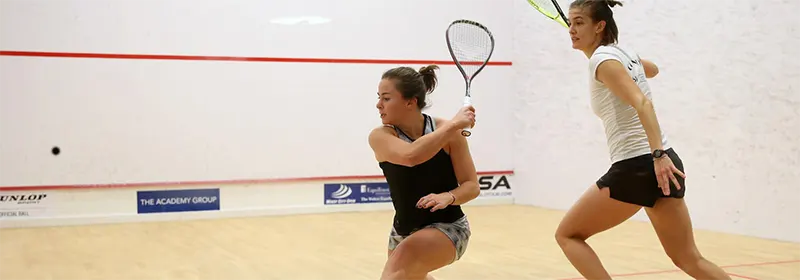24 August 2022 / 3-Min Read / Translate
If you were to count the average number of shots per rally over the course of a whole playing life, what do you think it would show? I haven’t done this, but I suspect that for most people it would show 2 or 3 shots per rally when they first start, then creeps up to 6 to 8 as they move into the improver stage and then peaks at just over 10 if they reach club standard. Perhaps if they reach advanced level, they may play 15 or more shots per rally.
TEN FOR CLUB LEVEL! Is that all? Doesn’t sound much, does it? Let me remind you I am talking about the AVERAGE number of shots per rally. Some will be less, a few other more, but not many more. Ten shots as an average is a lot more tiring than you think.
Being able to keep a rally going for more than 10 shots displays skill and patience. Digging the balls out of the back corner AND playing a good enough shot that it is not immediately volleyed for a winner is important. Anybody can go for winners. What I didn’t mention in the first paragraph, is that when you get to over 50 or so years old, that average number will drop down. In some cases, almost back to beginner levels because too many men seems to go for crosscourt winners on every single serve. AAARRRGGGHH!

Yeah, kind of. It sounds easy, doesn’t it? Well, it’s not. When I was coaching professionally and working with talented juniors, we would spend 2 weeks every summer, doing a conditioned game I called “Non-Stop”. This was done for 1 hour, every day, and consisted for 20 minutes of length-only rallies, where if somebody “won” the point (although no scoring was kept), whoever was nearest the ball would pick it up and start the rally again, no serving, no pausing, just hit the ball. It’s hard fricking work.
It does however, get you mentally prepared for long rallies. After that a 1 minute break for a sip of water and onto the next 20 minutes, which consisted of the same idea, but instead of length-only, short volleys were allowed. After another 1 minute break, the final 20 minutes were length only drives, but short volleys and boasts were allowed. I should mention that after each short shot, the ball had to be played to the back.
You, of course, don’t have to do it for one hour, but 5 minutes for each conditioned game, would be great practice. The key is to spend time hitting the ball, where the objective is not to “win” the point, or hit winners, but stay in the rally, limit your opponent’s options and develop physical and mental patience.
If you are interested in working on this aspect of your game, I recommend videoing one game from a competitive match, generally the second and record the number of shots per rally. Write it down in a notebook and do it again in 6 weeks. However, unless you are specifically doing any training top increase this number, it likely won’t change. Even a change of 1 shot on average is good improvement. Don’t expect huge jumps!
I am not trying to turn you into a completely defensive player, who is afraid of going for winners. I want you to be an attacking squash player. However, the chances are that you go for winners at the wrong time; partly because your fitness is not as good as it should be, but mostly because you don’t have the mental strength to wait for the right opportunity.
Take the time to try the homework above and I am sure you will see a positive change in your game. let me know how it goes!